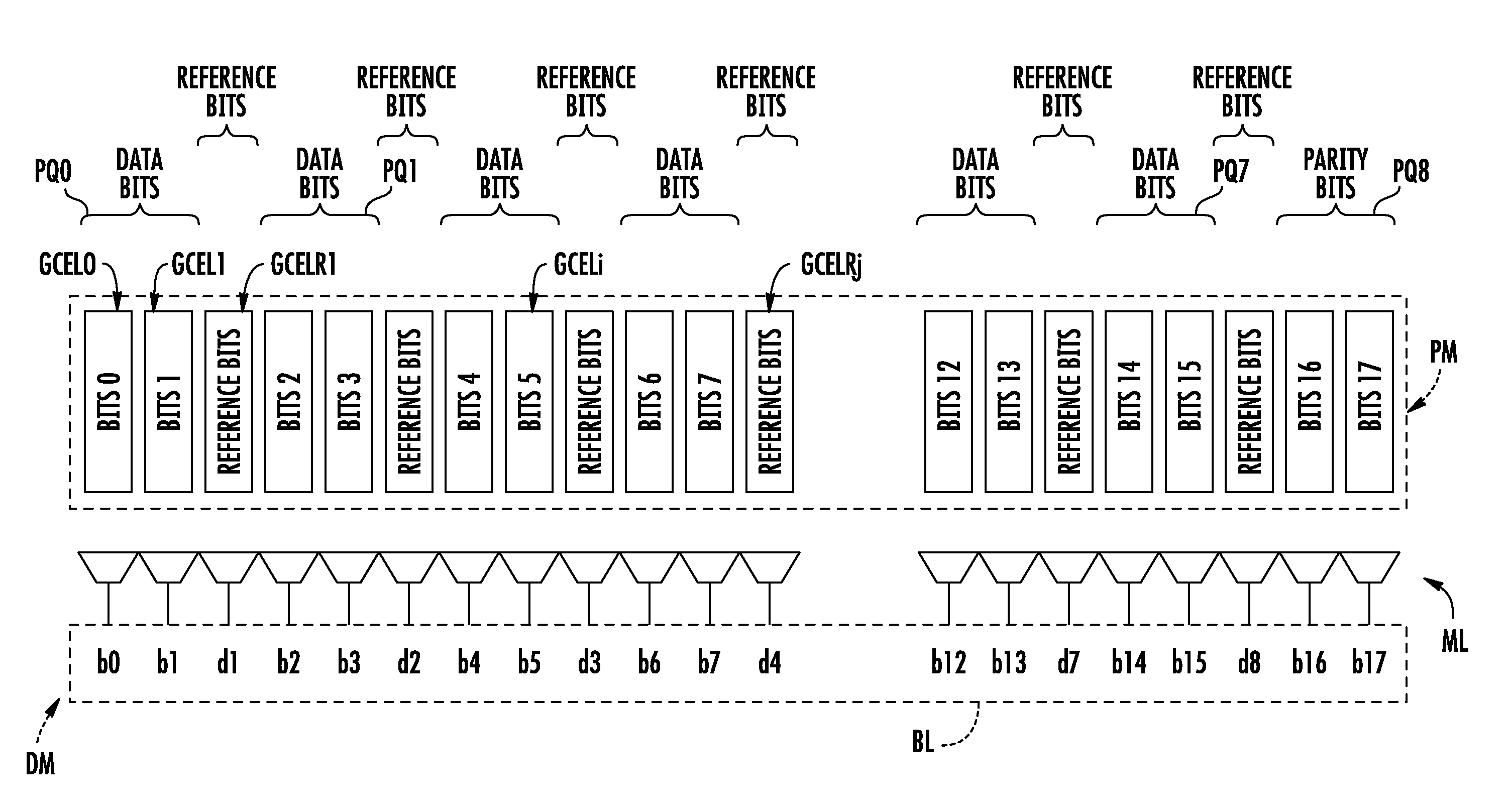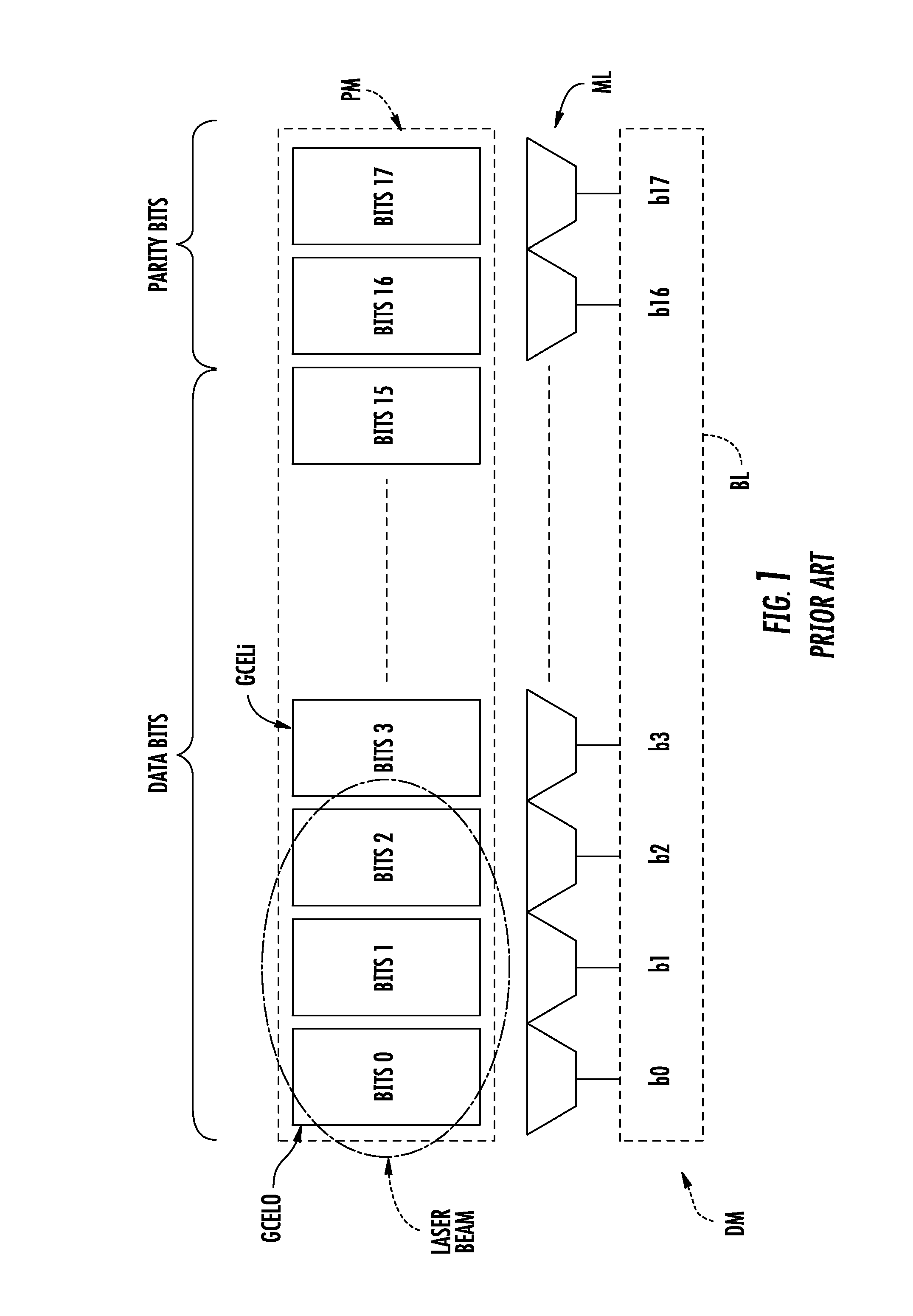Method of detecting an attack by fault injection on a memory device, and corresponding memory device
a memory device and fault injection technology, applied in the field of electromechanical circuits, can solve problems such as detection signals, and achieve the effect of more reliable detection of attacks by fault injection
- Summary
- Abstract
- Description
- Claims
- Application Information
AI Technical Summary
Benefits of technology
Problems solved by technology
Method used
Image
Examples
Embodiment Construction
[0020]In FIG. 1, the reference DM designates a conventional memory device whose memory plane PM includes sets of memory cells GCELi. The memory cells of one and the same set are configured to store the bits of the same rank of the different blocks of bits BL that have to be stored in the memory plane. More specifically, in the example described here, a block of bits BL that has to be stored in the memory plane includes data bits, in this case 16 (ranked 0 to 15), and parity bits, in this case two, ranked 16 and 17.
[0021]Also, for a given block BL, the memory cell CEL0 is configured to store the bit b0 of rank 0. The memory cell CEL1 is configured to store the bit b1 of rank 1 and, more generally, the memory cell CELi is configured to store the bit bi of rank i. The group of memory cells CELi is therefore configured to store the block BL.
[0022]The memory device has a bit-by-bit architecture, which means that, when a block BL is read, all the bits of the block can be read individually...
PUM
 Login to View More
Login to View More Abstract
Description
Claims
Application Information
 Login to View More
Login to View More - R&D
- Intellectual Property
- Life Sciences
- Materials
- Tech Scout
- Unparalleled Data Quality
- Higher Quality Content
- 60% Fewer Hallucinations
Browse by: Latest US Patents, China's latest patents, Technical Efficacy Thesaurus, Application Domain, Technology Topic, Popular Technical Reports.
© 2025 PatSnap. All rights reserved.Legal|Privacy policy|Modern Slavery Act Transparency Statement|Sitemap|About US| Contact US: help@patsnap.com



